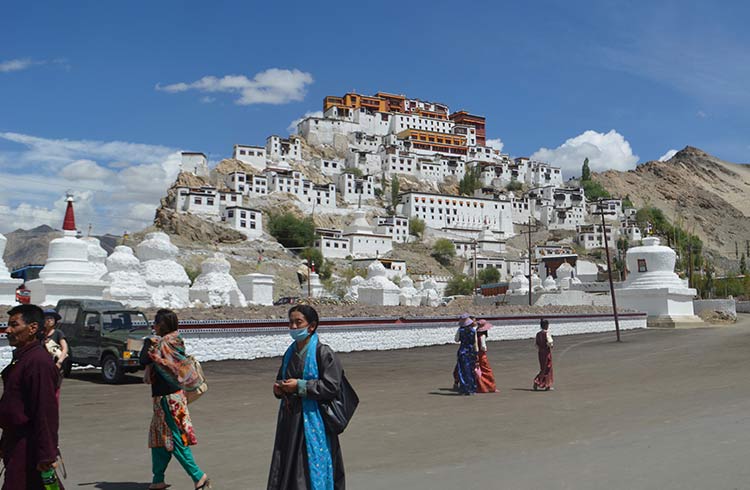The army has successfully compelled Chinese troops to remove four tents they had installed in the Table Top Area of Gurung Hills in Chushul, which is a buffer zone along the Line of Actual Control (LAC) in Eastern Ladakh. Locals observed the PLA’s tents and promptly alerted the army officials, and the army quickly responded and forced the Chinese troops to remove the tents without any untoward incidents. The army is in total command to maintain control along the LAC and protect the buffer zones. The Government has a proactive approach to safeguarding the nation’s territory and promoting tourism in Ladakh while maintaining a vigilant eye on the situation along the border. The army is prepared and well-equipped, ensuring the security of the last border post and countering any potential misadventures. The Government has focused on fulfilling the minute requirements of the army, which include constructing bunkers for tanks, establishing advanced landing grounds and helipads, providing drinking water facilities, constructing all-weather bunkers, and equipping the army with the latest arms and equipment. The Army, with full support from the Government, has been successful in controlling the situation in Ladakh. Any attempt by China, such as inch-by-inch encroachment or violating buffer zones, has been met with strong resistance from the Army, ultimately forcing the PLA personnel to retreat.
On the other hand, the Government’s efforts to promote Ladakh as an international tourist destination and focus on eco-tourism are praiseworthy. By preserving the environment and developing eco-friendly tourist spots, the Government aims to ensure sustainable tourism practices in the region. The establishment of the Hanle Observatory is a significant step in this direction. Hanle’s unique features, such as exceptionally clear skies and minimal light pollution, make it an ideal location for stargazing and astronomical observations. The absence of significant light sources in the surrounding area contributes to the relatively dark skies, creating optimal conditions for observing the stars. Designating Hanle as a Dark Sky Reserve demonstrates the Government’s commitment to preserving and protecting the quality of its night skies by minimising light pollution. The opening of Hanle to foreign visitors, especially in conjunction with the world-famous Ladakh Nomadic Festival, has the potential to bring an economic boost to the region. By showcasing the cultural richness of Ladakh alongside its modern observatory, visitors will have a once-in-a-lifetime experience. This combination of cultural heritage and scientific exploration further highlights the tourism potential of Ladakh.
The local populace, their elected political leaders, the local administration, and the army are collaborating and actively participating in the protection and advancement of Ladakh as a prominent eco-tourism destination. This collective effort aims to foster sustainable tourism development in Ladakh, ensuring its long-term viability. Tourism plays a crucial role in the local economy of Ladakh, and the administration is rightfully prioritising its development. The army and civil administration are considering opening additional tourist spots, including areas near Pangong Lake; the Chand Chenmo sector and Marsimikla pass up to Tosgtsalo are also being considered as potential tourist destinations. The Ladakh administration’s responsiveness to the demands of the local community reflects its commitment to fulfilling its aspirations for tourism expansion. The Government’s focus on developing Ladakh as an all-weather tourist destination is evident in the construction of tunnels to enhance accessibility via Jammu and Kashmir and Himachal Pradesh. Additionally, the development of helipads in remote areas aims to improve accessibility. Other infrastructural projects, including hospitals, a university, and airports, are underway simultaneously. The establishment of all-weather mobile connectivity further enhances the region’s appeal to tourists.
With these ongoing efforts and the upcoming infrastructure developments, Ladakh has the potential to become a significant tourist destination on the world stage. The government’s proactive approach to tourism development in Ladakh will likely contribute to the region’s economic growth and create new opportunities for both the local community and visitors.
Trending Now
E-Paper


